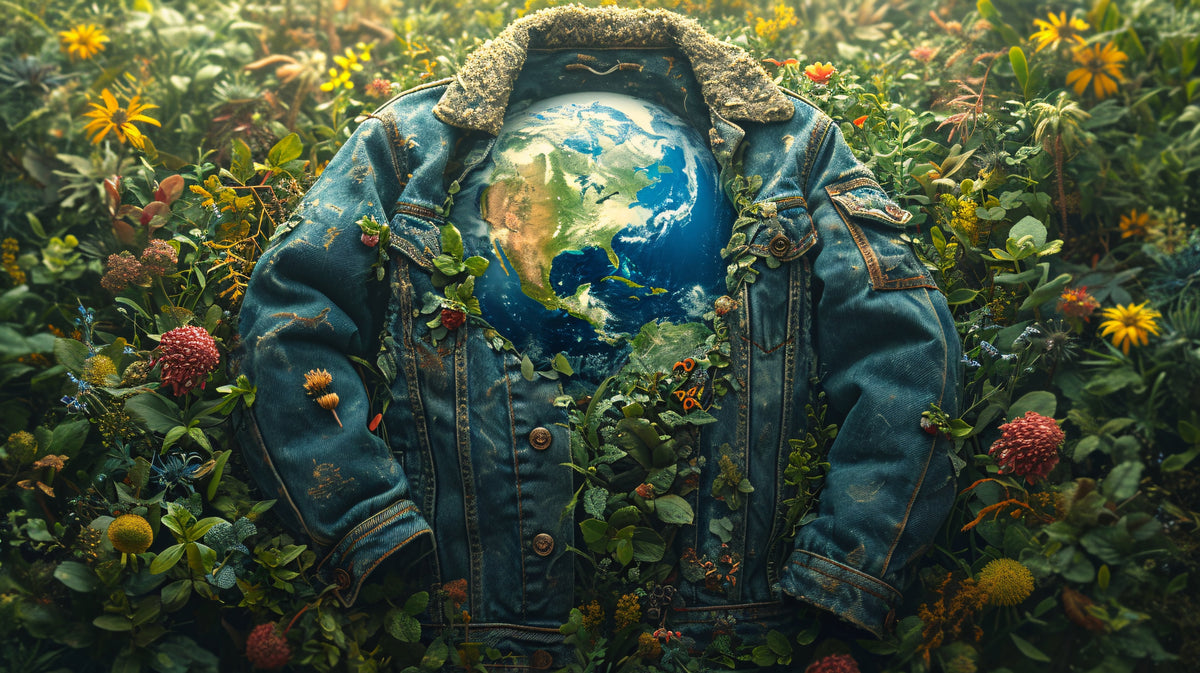
What is Slow Fashion and Why Fast Fashion is Bad
|
|
Time to read 8 min
|
|
Time to read 8 min
Table of content
Fast fashion has transformed the way we shop, offering trendy clothing at low prices with lightning speed. But behind its affordable and ever-changing appeal lies a significant cost: the environment. Fast fashion's emphasis on quantity over quality has created a global industry that wreaks havoc on natural resources, pollutes the planet, and generates mountains of waste.
Fast fashion may dominate the clothing industry, but its environmental and social costs are nothing short of disastrous. From polluting waterways to generating massive textile waste and driving unethical labor practices, fast fashion has catastrophic effects on the planet. It’s time to rethink our shopping habits and embrace slow fashion, a movement focused on sustainability, ethical practices, and high-quality craftsmanship. By choosing slow fashion brands, you’re not only investing in timeless, durable pieces but also supporting a more eco-friendly and socially responsible future. Together, we’ll explore why fast fashion is bad for the planet and how slow fashion is paving the way for a more sustainable, stylish tomorrow.
Addressing the detrimental effects of fast fashion requires a shift towards sustainable practices:
But first, let’s dive into the environmental impact of fast fashion and explore why sustainable choices are more important than ever.
Fast fashion takes a significant environmental toll, making it one of the most damaging industries on the planet.
These cumulative impacts highlight the urgent need to shift away from fast fashion and embrace sustainable, slow fashion practices that prioritize environmental stewardship.
Fast fashion’s problems aren’t just environmental; they’re deeply human. The industry thrives on unethical labor practices, from low wages to dangerous working conditions. Workers, often in developing countries, face exploitation as companies race to produce the latest trends at minimal cost. The rapid turnover of fashion trends promotes a culture of overconsumption. Supporting fast fashion perpetuates these injustices, making it a social as well as environmental issue.
These points highlight the human cost of fast fashion and the importance of prioritizing brands that value ethical practices and fair treatment.
The alternative to fast fashion is slow, sustainable fashion – an approach that prioritizes quality over quantity, ethical labor practices, and environmental stewardship. Here’s why choosing sustainable brands makes a difference:
Addressing the negative impacts of fast fashion requires a shift towards sustainable practices. Consumers can contribute by supporting brands that prioritize ethical production, using eco-friendly materials, and promoting recycling and upcycling of garments. Adopting a more mindful approach to fashion consumption can help mitigate the industry's environmental footprint and foster a more sustainable future.
As a consumer, you have the power to drive change by making mindful choices. Here are a few simple steps you can take to combat the negative impact of fast fashion:

The fast fashion industry’s impact on the planet is undeniable, but change is possible. By supporting sustainable fashion and adopting a more mindful approach to consumption, we can reduce the industry’s environmental footprint and contribute to a healthier, more ethical world. Choosing sustainable style isn’t just a trend – it’s a responsibility and a powerful way to make a difference.

SpiritHoods is a leading sustainable slow fashion brand committed to creating high-quality, eco-friendly, and ethically crafted pieces that make a positive impact on the planet. By prioritizing Oeko-Tex certified materials, PETA-approved faux fur, and small-batch production, SpiritHoods ensures every item is cruelty-free and made with minimal environmental impact. Unlike fast fashion, SpiritHoods embraces a slow fashion philosophy, designing timeless, durable pieces that reduce waste and encourage mindful consumption. This approach not only supports ethical practices but also helps combat the harmful effects of overproduction and pollution. By choosing SpiritHoods, you’re investing in a brand that values sustainability, animal welfare, and the future of our planet—proof that style can be both beautiful and responsible.
By shopping with SpiritHoods, you’re supporting a brand that aligns with your values, helping to protect the planet while embracing bold, sustainable fashion.

Slow fashion is a movement that prioritizes sustainability, ethical production, and high-quality, timeless designs over the disposable trends of fast fashion. By focusing on eco-friendly materials, fair labor practices, and mindful consumption, slow fashion reduces waste, pollution, and the exploitation of workers. In contrast, fast fashion relies on overproduction, harmful synthetic materials, and unethical labor practices, creating significant environmental and social harm. Supporting slow fashion brands is a powerful step toward a healthier planet, encouraging consumers to invest in durable pieces that stand the test of time. By choosing slow fashion, you’re not just upgrading your wardrobe – you’re making a conscious decision to protect the environment, uphold human rights, and contribute to a more sustainable future.
In this article we explore what slow fashion is and why fast fashion is bad for the planet. And how supporting businesses that create eco-friendly and compassionately made clothing is better for the environment and people.
SpiritHoods is a slow fashion brand that specializes in cruelty-free and sustainable faux fur garments.

